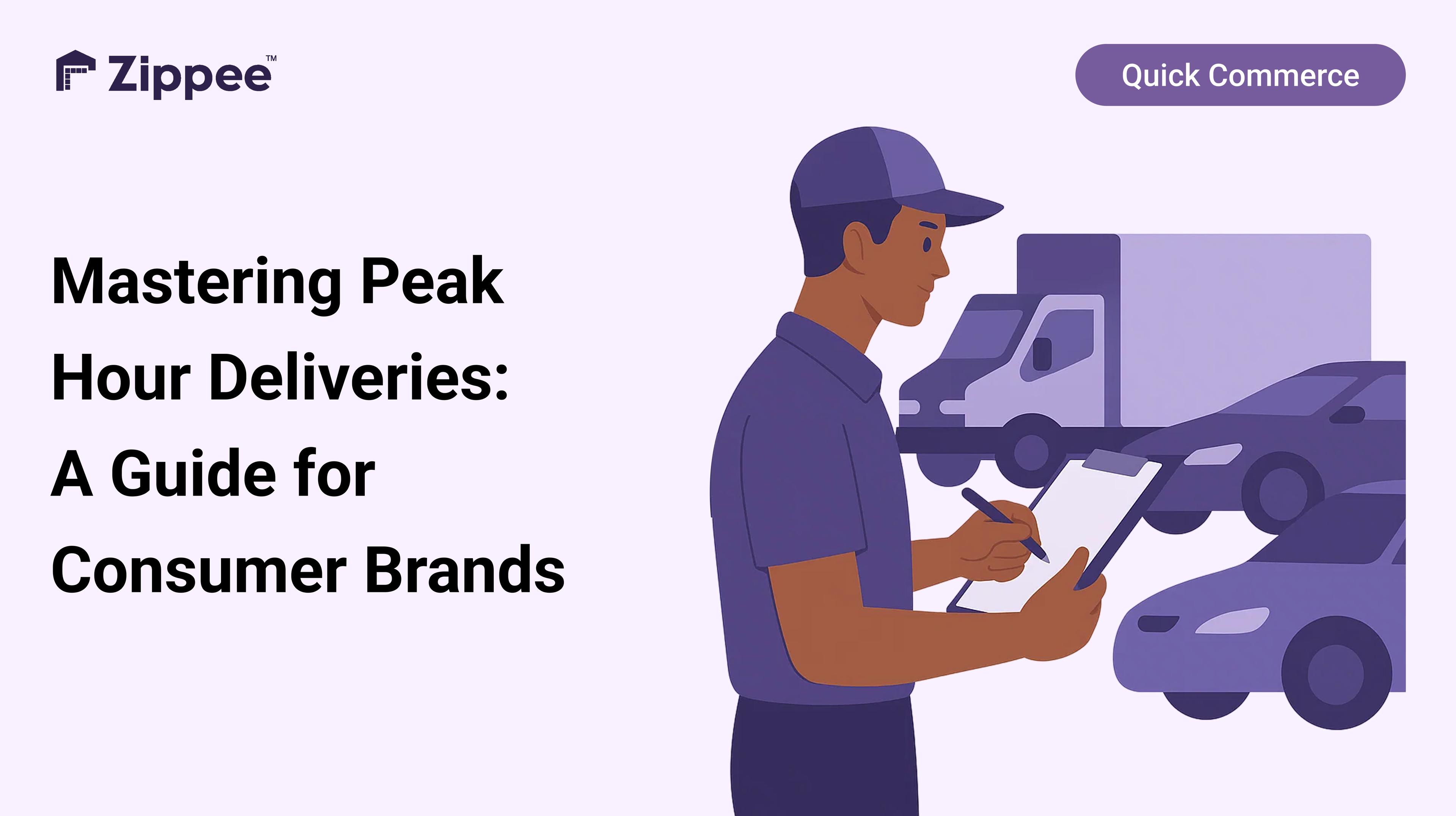
Mastering Peak-Hour Deliveries: A Guide for Consumer Brands :
In the fast-paced arena of quick commerce delivery, peak-hour surges can make or break the customer experience.
When lunchtime orders spike or the evening grocery rush begins, rapid delivery promises — including same-day delivery commitments — are put to the ultimate test. It’s not just about getting the order out of the dark store; it’s about ensuring customers receive their items on time, intact, and with complete transparency.
The challenge? High-demand periods amplify every operational bottleneck, including traffic delays, rider shortages, routing inefficiencies, and even minor technical glitches. Left unmanaged, these moments can damage customer trust and impact post-purchase satisfaction, a critical loyalty driver in quick commerce logistics.
We understand these challenges deeply, not just because we’re in the business, but because we see them play out every day for brands and riders alike. While this blog focuses on sharing practical strategies, we’ll also highlight how platforms like Zippee leverage technology and hyperlocal delivery networks to help brands maintain service quality even during peak periods.
Why Peak-Hour Efficiency Matters in Quick Commerce:
The promise of rapid delivery, often under 30 minutes, creates customer expectations that leave little room for error. During demand spikes, even a 10-minute delay can feel like a major miss.
If your quick commerce delivery operations can’t scale smoothly in these moments, you risk:
- Missed ETAs and cancelled orders
- Overworked riders and burnout
- Increased WISMO (“Where Is My Order?”) support queries
- Negative reviews and churn
In fact, internal data across e-commerce suggests that delivery delays during high-volume periods account for a significant share of first-time customer drop-off. Consistency, not just speed, is what keeps customers coming back.
Operational Tactics for Managing Peak Demand:
1. Dynamic Routing: Smarter Paths in Real Time
Instead of static delivery routes, dynamic routing uses live traffic, order density, and rider location data to determine the fastest drop sequence. Zippee’s routing engine processes this data instantly to ensure every order follows the most efficient path, even in unpredictable conditions.
2. Rider Pool Flexibility
High-demand periods require a mix of full-time, part-time, and gig riders ready to be activated instantly. Zippee’s rider management tools allow brands to pre-schedule peak-hour shifts, deploy standby riders, and offer performance-based incentives for faster turnaround times.
3. Dark Store & Inventory Zoning
Positioning high-demand SKUs closer to customer clusters allows pickers and riders to operate faster. For rapid delivery, even a 200–300m shorter distance can mean hitting the promised ETA. With Zippee’s hyperlocal inventory insights, brands can strategically stock the right products in the right micro-warehouses.
4. Surge Pricing & Demand Smoothing
While controversial, modest surge pricing during demand spikes can both manage order volumes and fairly compensate riders for high-pressure slots. Coupled with Zippee’s analytics for pre-order and delivery-window optimization, brands can spread demand more evenly and prevent operational overload.
Technology-Assisted Solutions for Peak-Hour Success:
Real-Time Order Tracking & ETA Adjustments
Customers expect transparency, especially when orders are at risk of delay. Zippee’s live tracking module shows customers exactly where their rider is, along with real-time ETA adjustments and proactive delay alerts—dramatically reducing WISMO queries and support calls.
Related read: How to Reduce WISMO Queries in Quick Commerce Delivery
AI-Driven Demand Forecasting
Historical order patterns, weather data, and local events can help AI models predict demand spikes before they hit. Zippee’s forecasting engine gives brands a clear operational heads-up, allowing them to staff, stock, and route accordingly, a major win for quick commerce logistics.
Rider App Optimization
Rider apps equipped with priority order alerts, optimized navigation, and shift-based incentives help minimize drop-offs and idle time during high-load windows. Zippee’s rider app is built for high-volume, high-speed environments, ensuring agents have the tools to deliver on time, every time.
Read more: Boosting First-Attempt Deliveries with Smarter Rider Management
Measuring Peak-Hour Performance -
Tracking the right KPIs will help identify both operational gaps and customer-impact moments:
- On-Time Delivery Rate during high-demand hours
- Average Delivery Time vs. ETA
- Rider Utilization Rate
- Peak-Hour Cancellation Rate
- Customer Satisfaction Scores for peak-hour orders
Winning the Peak-Hour Game:
In quick commerce logistics, surviving peak hours is not enough; you have to excel in them. Customers remember how you handle the busiest times more than the quiet ones.
At Zippee, we help brands turn high-demand chaos into seamless, rapid 30-Min / 60-Min / 120-Min / Same-Day Delivery experiences. Our platform combines hyperlocal delivery networks, AI-powered forecasting, intelligent routing, and live customer communication to keep service levels high when it matters most.
Whether you want to reduce peak-hour delays, increase rider efficiency, or maintain customer trust during demand surges, Zippee is purpose-built to give your brand the operational edge it needs.
Ready to unlock faster deliveries for your brand? Sign up for our waitlist, and let's reach your customers faster, together!





.png&w=256&q=75)













